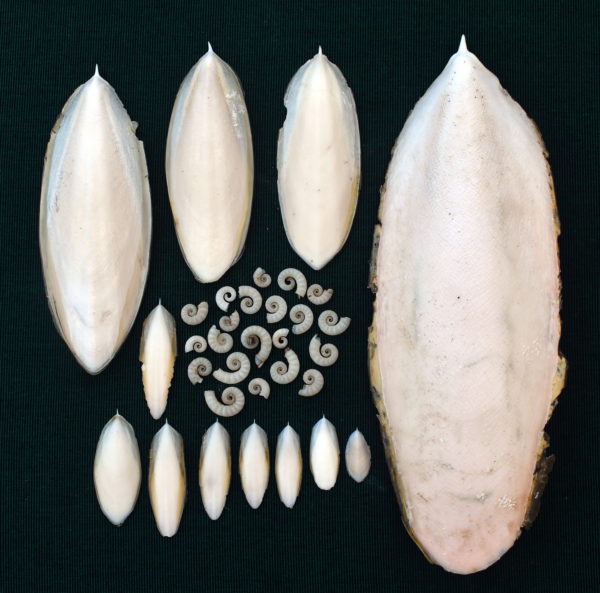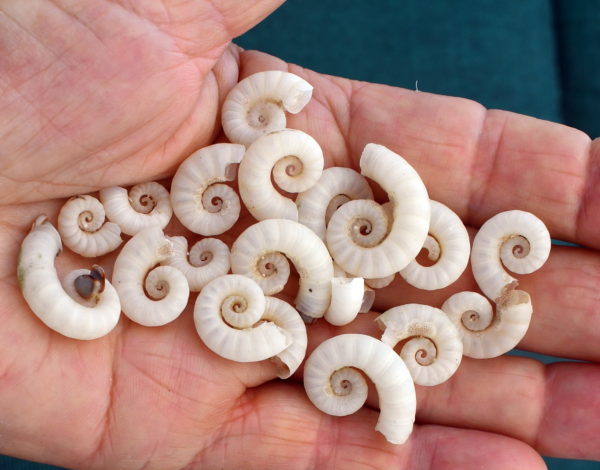Published in the Ocean Watch column, Honolulu Star-Advertiser © Susan Scott
November 4, 2017
I’m home from Australia after several outstanding voyages to the outer reefs of the Great Barrier Reef Marine Park. As is often the case, though, a highlight of the trip was a beach walk where I found perfectly intact shells of two kinds of cuttlefish: the common cuttlefish (Sepia) and the ram’s horn cuttlefish (Spirula).
These weren’t rare finds because the creatures’ skeletons are common on beaches here. In collecting some of the shells, though, and looking them up in a new doorstop book I bought for the boat, I was in for a surprise. When I studied invertebrate zoology in the 1980s, I misread a textbook caption, and since then have been merrily spouting half-truths about cuttlefish.
 Each cuttlefish species has a distinct shape, size and ridge pattern in
Each cuttlefish species has a distinct shape, size and ridge pattern in
their buoyancy bone. Cuttlefish bones from Horseshoe Bay,
Magnetic Island, Queensland, Australia, are displayed.
©2017 Susan Scott
Cuttlefish belong to a group of creatures known as cephalopods, a class of mollusk (snails, clams, etc.) that includes nautilus, squids and octopuses. About 120 species of cuttlefish live throughout the world, but you won’t find their skeletons in Hawaii or on beaches in the Americas. Cuttlefish existed before Earth’s land masses split into continents, and that process isolated cuttlefish from some ocean areas.
Cuttlefish look like roly-poly squid, both having two big eyes and 10 tentacles around the mouth that reach out and grab anything they can catch, including other cuttlefish. In turn, just about every marine predator in the world, from fish to dolphins to seabirds, eats cuttlefish.
Most people know cuttlefish from the white, oval shells called cuttlebones that we hang in our pet bird cages as calcium supplements. Pet supply companies don’t have to search hard for the product. The bones float after the cuttlefish dies, and the white rafts of every size, from 1 to 20 inches long, litter Australia’s water surfaces and beaches.
In life, the cuttlefish’s porous calcium-type bone lies under its skin along its back like a flat backbone. By adding or removing air and water in the bones’ spaces, the animal controls its buoyancy.
The tiny cuttlefish species called the ram’s horn, however, lacks a flat cuttlebone along its back. Instead, near its rear end lies an internal spiraled shell, this species’ buoyancy controller. After the ram’s horn cuttlefish dies, its spiral also floats and drifts ashore.

My decades-old error was thinking (and telling anyone who would listen) that the spiral floats were inside all cuttlefish. In fact, each cuttlefish species has its own distinct shape, size, texture and ridge pattern in its buoyancy bone. My aha moment was in learning that the 3/4-inch-tall spirals come from a single deep-sea species, and that it has the charming common name of ram’s horn cuttlefish.
This is why, even after squishing my face and blistering my heels with weeks of superb snorkeling, beach walks remain high on my list of favorite activities.
As does buying heavy, expensive marine animal guides.